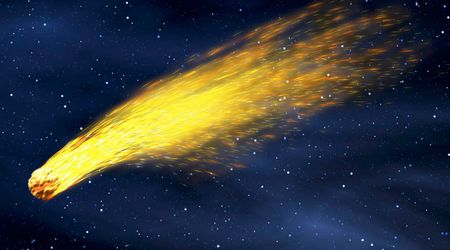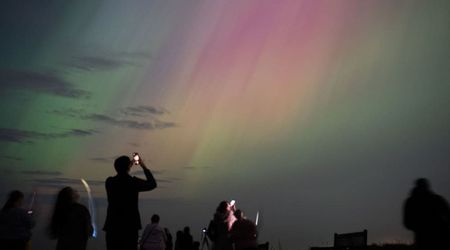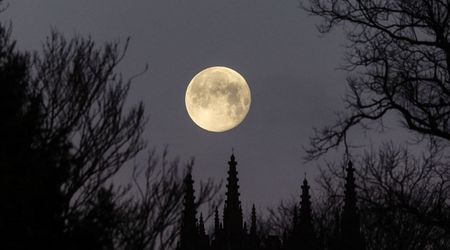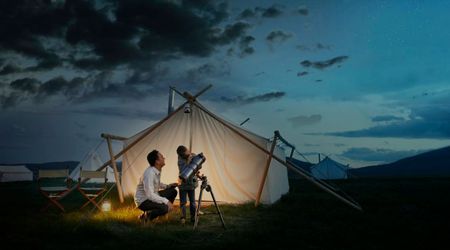Don't miss the 'String of Pearls' galaxy at peak visibility on September 24—where and how to see it best
![Caldwell 72 or NGC 55. (Cover Image Credit: NASA, ESA, R. de Jong (Leibniz-Institut fur Astrophysik Potsdam [AIP]), and G. Illingworth (University of California – Santa Cruz); Processing: Gladys Kober (NASA/Catholic University of America)](https://d3hedi16gruj5j.cloudfront.net/774150/uploads/c068c760-9860-11f0-9ac2-07c12b2fa437_1200_630.jpeg)
Stargazers across the Southern Hemisphere and the lower latitudes of the Northern Hemisphere are in for a treat as the NGC 55 galaxy, nicknamed the "String of Pearls," reaches its highest point in the sky, as per National Geographic.

This celestial object, also known as Caldwell 72, is set to be at its most visible around midnight on September 24. The galaxy is noted for its distinctive, irregular shape, looking like a stretched string with young, bright stars positioned all across its disk. This has earned it the "String of Pearls" moniker. Astronomers classify NGC 55 as a Magellanic-type galaxy, a category that places it between an irregular and a dwarf spiral galaxy. With its peak visibility approaching, sky watchers will have a prime opportunity to view this unique formation.
Located approximately 6.5 million light-years from Earth in the constellation Sculptor, the NGC 55 galaxy was first documented in 1826 by Scottish astronomer James Dunlop while he was in Australia, according to NASA. With an apparent magnitude of 7.8, it's bright enough to be seen with a pair of high-quality binoculars from a dark-sky location, especially due to its large apparent size of 32 arcminutes by 6 arcminutes. It can also be spotted by a small telescope. The optimal viewing season for Southern Hemisphere observers is typically spring.

The term 'Magellanic-type galaxy' is inspired by the Large Magellanic Cloud, one of the Milky Way’s satellite galaxies. These galaxies feature a single spiral arm and serve as an intermediate class between irregular and dwarf spiral galaxies. Visually, NGC 55 bears a strong resemblance to the Large Magellanic Cloud, though it's smaller and can be seen from an edge-on perspective. At its current size, it's comparable to the diameter of our Full Moon.

Observations from the Hubble Space Telescope's Advanced Camera for Surveys have provided a detailed composite image of the galaxy's central region by combining visible and infrared light. This imagery is being used by astronomers to study how the galaxy's small-scale structures, such as its dust clouds, affect the way light is dimmed as it travels to us. Understanding the distribution of this matter is crucial, as the light we observe from the galaxy is partially obscured by the dust along our line of sight.

The stunning image of the "String of Pearls" galaxy was captured by Reddit user Zimmley. The astrophotographer described the subject as a "magellanic-type irregular galaxy," noting its unique structure that mimics the nearby Large Magellanic Cloud while still lacking the typical symmetry of other galactic forms.
The photograph was the result of a dedicated four-hour and twenty-five-minute acquisition process. The setup included a Saxon NEQ6 Pro mount, a QHY 294c imaging camera, and a Saxon 1200mm x 250mm Newtonian telescope, among others. The astrophotographer used an SVBony Ha 7nm filter and a ZWO ASI120mm guide camera to ensure precision. The final image was a composite of both unfiltered exposures and specific hydrogen-alpha filtered shots, showcasing the intricate details of this distant celestial wonder.

The raw data was then processed using specialized software to refine the final image. The astrophotographer relied on Astro Pixel Processor to separately stack the RGB and hydrogen-alpha data. The software's capabilities for light pollution removal and vignette correction were crucial in preparing the images. Further enhancements were made using Pixinsight, Starnet v2, and Photoshop with third-party plugins like Astra Image and Topaz DenoiseAI to bring out the galaxy's full detail.
More on Starlust
Hubble Space Telescope's latest image reveals the secrets of low surface brightness galaxy NGC 45
Watch stunning transition video of planetary nebula NGC 6072 between Webb's NIRCam and MIRI images









